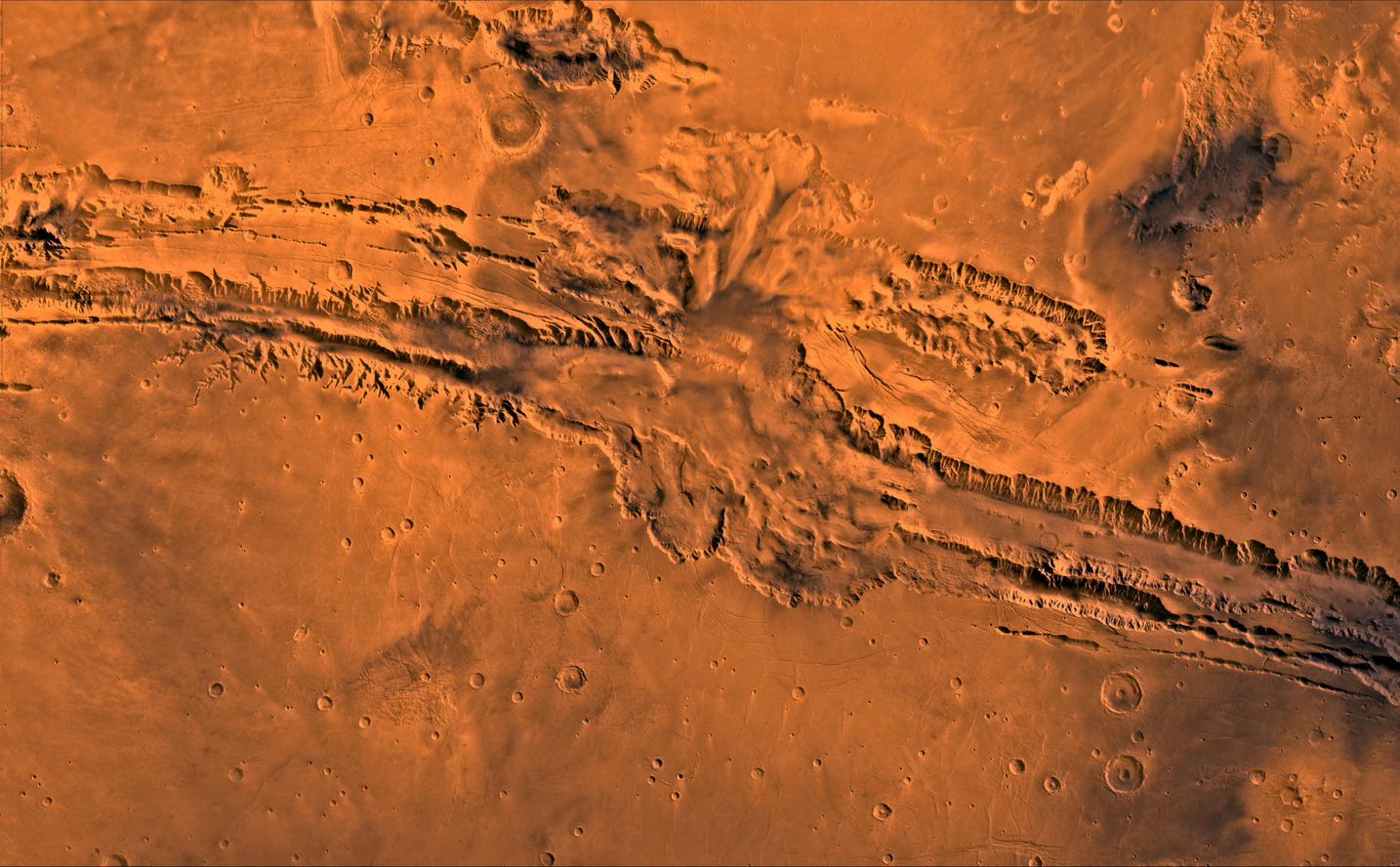Researchers have discovered a significant amount of Water inside Mars Grand Canyon
And it's 'packed full of water'.

Thursday, December 16, 2021 | Chimniii Desk
Key Highlights
- Up to 40% of the material near the canyon's surface could be water molecules.
- The Valles Marineris canyon system on Mars conceals water.
- Various characteristics of the canyon, notably its topology, have prompted the experts to hypothesise that the water is most likely in its solid state (ice).
- While we do not yet know what type of water lies beneath Mars' vast system of canyons, the first human mission to Mars may prioritise exploring this area.
Advertisement

The Red Planet conceals an enticing mystery.
According to a recent press release from the European Space Agency, scientists have discovered a world-historic finding on Mars: "large amounts of water" are hidden within the Red Planet's Valles Marineris, the Red Planet's equivalent of our great canyon system (ESA).
Additionally, up to 40% of the material near the canyon's surface could be water molecules.
Advertisement
The Valles Marineris canyon system on Mars conceals water.

The newly discovered volume of water is hidden beneath Mars's surface and was discovered by the Trace Gas Orbiter, a mission in its early stages led by the ESA-Roscosmos ExoMars project. The orbiter's Fine Resolution Epithermal Neutron Detector (FREND) instrument detected signs of water, which is designed to examine Mars' topography and map the amount and concentration of hydrogen hidden in the Red Planet's soil.
The mechanism is as follows: as high-energy cosmic rays strike the surface, the soil emits neutrons. And because wet soil emits fewer neutrons than dry soil, scientists can analyse and assess the water content of soil hidden beneath its ancient surface.
At the same time, "FREND revealed an area with an unusually high concentration of hydrogen in the colossal Valles Marineris canyon system: assuming the hydrogen we see is bound to water molecules, up to 40% of the near-surface material in this region appears to be water," said Igor Mitrofanov of the Russian Academy of Science.
While scientists have already discovered water on Mars, the majority of previous discoveries have located the chemical critical to life as we know it near the Red Planet's poles, where it exists as ice.
At lower latitudes, only very small pockets of water have been discovered, which is a major disappointment given that future people on Mars will require a large amount of water and there are better possibilities for settling the planet at lower latitudes.
However, with what appears to be an abundance of water in Valles Marineris, we've made a significant step toward creating a stable source of water on the nearest alien world.
Advertisement
Mars' canyon water could be liquid, frozen, or a muddled mixture of the two.

In a tweet accompanying the announcement, ExoMars stated, "The reservoir is large, not too deep underground, and could be easily exploited by future explorers." That sounds absolutely fantastic! However, it is premature for Musk to pack his bags and head to the site since much work remains to be done.
A study published alongside the release in the journal Icarus demonstrates that neutron detection does not discriminate between ice and water molecules. This implies that geochemists must enter the scientific fray in order to elucidate further facts. However, various characteristics of the canyon, notably its topology, have prompted the experts to hypothesise that the water is most likely in its solid state (ice). However, it may be a blend of solid and liquid.
In an ESA announcement, research co-author Alexey Malakhov stated, "We discovered that a core area of Valles Marineris is densely packed with water – significantly more than we expected." "This is remarkably similar to Earth's permafrost zones, where water ice survives indefinitely beneath dry soil due to the region's continual low temperatures." Thus, while we do not yet know what type of water lies beneath Mars' vast system of canyons, the first human mission to Mars may prioritise exploring this area.
Advertisement